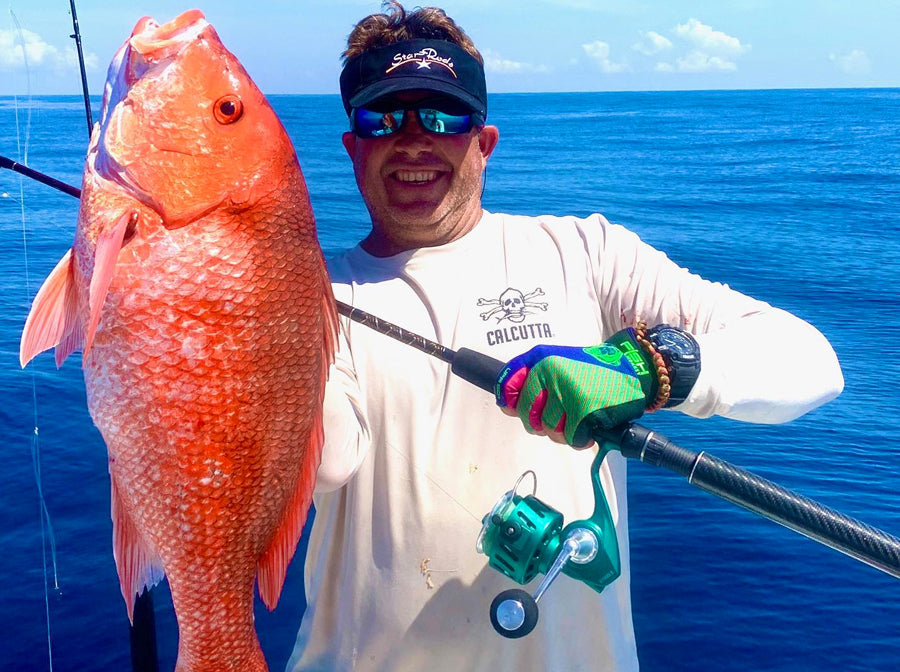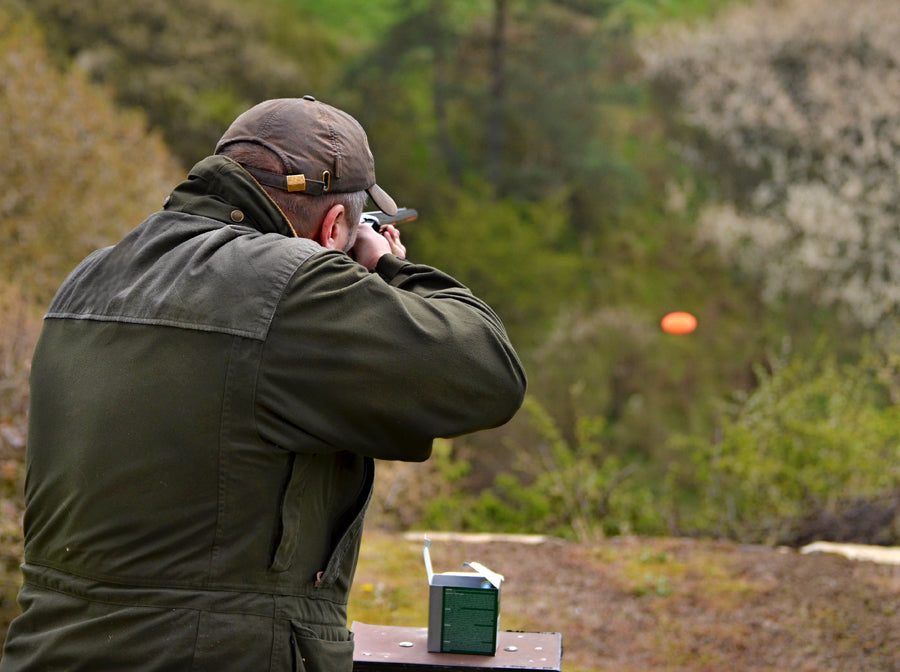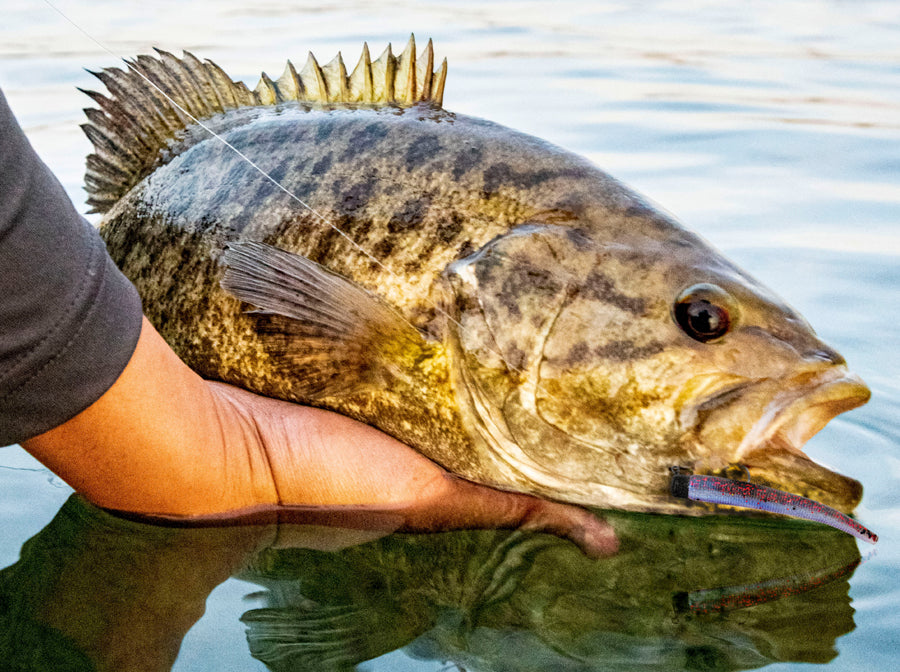Ask any seasoned fishing guide and they will tell you that vertical jigging is one of the most effective methods for catching a variety of saltwater fish. Jigging can also be one of the most difficult techniques to master. However, armed with the right baits and the proper tactics, jigging will land inshore, nearshore and offshore species, ranging from flounder and gray trout to king mackerel, grouper and more.
What is saltwater jigging? What is vertical jigging? Which jigging techniques work best? What are the most effective baits to use when jigging? When and where should you try jig fishing?
Jigging is a proven method for catching a variety of saltwater fish.
To answer these questions and more, we spoke with Captain Noah Lynk, founder and operator of Noah’s Ark Fishing Charters on Harker’s Island in North Carolina. Captain Noah has been guiding anglers for more than 20 years. If you’ve ever fished with Captain Noah, you know he likes to go hard from the time he hits the water until he’s finished cleaning the day’s catch back at the dock. Here are Captain Noah’s insights and proven tips that will help you step up your jigging game.
1. Vertical jigging (slow-pitch jigging) will catch a variety of saltwater fish.
Jigging metal jigs in saltwater, commonly referred to as vertical jigging or slow-pitch jigging, can catch just about everything. Jigging in the inshore or nearshore waters of my area (Cape Lookout, NC to Atlantic Beach, NC) can be very productive for gray trout (weakfish), sea mullet (whiting), flounder, Spanish mackerel and other nearshore species.
Moving offshore to the wrecks, AR-285, D-Wreck, Atlas Tanker and some of the live bottom areas, jigging will produce a good variety of sea bass, grouper, amberjack, king mackerel, Spanish mackerel, gray trout, red fish, snappers—just about everything that lives and feeds from the mid-water column to the bottom.
2. A fish finder is critical for jigging around wrecks and structure.
It’s very important to use a fish finder when jigging around wrecks and other structures. You have to make sure that you stay just off the structure to avoid snags and losing your gear. I never anchor around such areas because you’ll almost always lose your anchor. Drifting works the best.

Jig fishing around wrecks and live bottom can produce snappers, red fish, grouper and more.
3. Use a heavy jig in strong currents and deep water.
When jigging in deep water, check the depth and current to make sure that you’re using a heavy enough jig to get straight down because the strong ocean current in say 75–100 feet of water or deeper will drag a jig that’s too light and too far up in the water column. I usually drop straight down, and when I feel the line go slack that means I’m on the bottom. Then I reel up a few cranks and start working the jig in smooth, but broken jigging patterns. It shouldn’t be long before you’re hooked up on something.
Use of electronics comes into play here as well. You want to use your fish finder to locate schools of bottom fish, and avoid fishing over dead bottom. Use your Man OverBoard (MOB) button or event marker to mark locations where you find fish. By doing this, you can always go back to that location later.
3. Live bottoms are alive with a variety of fish—perfect for jigging.
Another great place to be jig fishing is over areas of live bottom. These are areas that you find on your fish finder that are usually rough and have bottom growth in the form of soft corals, sea grasses, etc. This brings in sea worms, small crabs, shrimp and more—which in turn brings in juvenile fish that feed on them, which brings the larger predators. You have virtually the whole food chain from top to bottom.
4. Ask an expert when selecting fishing tackle for jigging.
When picking out jigging tackle, consult a local captain or someone who does the type of jigging that you want to do—in the areas you want to fish. You’ve got lots of different areas, water depths, species that you can jig for, so you really need to know what tackle is best suited for your desired fishery. Contacting a local tackle shop can be useful as well, as long as you talk with someone who’s a good and honest fisherman and not just looking to sell tackle. Expert advice is critical unless you’re just looking to figure it out on your own, which is commendable—but time consuming.
For example, when inshore jigging for gray trout, you can easily use an average spinning rod or baitcasting setup with your choice of jigging tackle. As you head offshore for grouper, snappers, black sea bass, amberjacks, etc., the rod choice and jig choice really start to matter. I personally prefer—and highly recommend—the Star Rods Plasma P817S70G (8–17 lb.) Spinning Rod for inshore jigging, and the Star Rods Plasma Jigging Rod PJS52H (heavy action) for spinning and conventional reels when jigging for offshore species.
The Star Rods Plasma Jigging Rod is made for battling big saltwater fish.
5. Use a Sea Striker Jig Fish, Clarkspoon or similar jig that are proven to work.
When jig fishing the inshore holes, nearshore structures and live bottom areas, my choice of metal (lead) jigs are going to be the Clarkspoon lineup of pogie jigs from 3/4 oz. to 2 oz. and the chrome jig from 5/8 oz. to 1.5 oz. The Sea Striker Jig Fish is very popular for inshore to offshore fishing, coming in a wide variety of colors from 1/2 oz. up to 4 oz. Another really good vertical jig that I like for inshore to nearshore fishing is going to be the Halco Lures Twisty that’s made in Australia. These range in size from 55 grams to 120 grams. For the true offshore, deep-water jigging experience, use butterfly jigs. Made by a wide variety of manufacturers, they are extremely effective for grouper, red snapper, king mackerel, amberjacks and large black sea bass. Even mahi and wahoo have been known to smack a butterfly jig.
6. Casting jigs works in windy conditions.
Another way that many fishermen use metal jigs is the cast and retrieve method; this is used primarily to get distance in windy conditions for the fast-moving predator fish such as Spanish mackerel, false albacore, Atlantic bonito, etc. I also use metal jigs, primarily the 3/4 to 1 oz. Clarkspoon pogie jig, the 1 oz. Sea Striker Jig Fish and the mid-range Halco Twisty during the winter for surf casting. I’m usually fishing into heavy seas and strong winds for winter red fish, speckled trout off of our local outer islands. Working it back in a rhythmic jigging motion is very productive for red fish, speckled trout, flounder etc.
The Star Rods Plasma Spinning Rod is ideal for casting in heavy seas and windy conditions.
7. Book a charter trip to improve your jigging technique.
Vertical jigging is an extremely effective way to catch fish. You might not always catch exactly what you’re after since there are lots of fish that hang out at the bottom. It’s not quite like targeting some other species, but with the correct tackle, rod and reel setup and proper technique, it definitely catches fish most of the time. The better your jigging technique, the more and bigger fish you’ll catch. I highly suggest taking a charter or two with an experienced local captain before heading out on your own boat. This will save countless hours of frustration, as well as save you time and money searching for all the right tackle. We’re all in it to have fun, but we also want to catch fish as well. Being knowledgeable about what you’re after is irreplaceable just as it is with everything else in life.
More Resources
The One that Got Away: Six Ways that Anglers Lose Fish
How to Catch More Spanish Mackerel
Fall Fishing Tips: Inshore Saltwater Fishing
Offshore Trolling Tips for Beginners
20 Items to Bring on A Deep-Sea Charter Fishing Trip
Strategies to Optimize Your Fishing Tackle Storage
Essential Fishing Tools for Your Tackle Box
Record Mahi-Mahi Caught with Star Rods Aerial Stand-Up Rod






